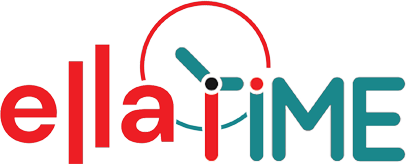In a world where technology drives nearly every aspect of life, technical literacy has become more than a skill — it is a necessity. From navigating digital communication tools to understanding emerging technologies like artificial intelligence and blockchain, the ability to comprehend and critically engage with technology shapes personal success, career advancement, and societal growth.
The concept of TEK-102 can be understood as a structured exploration of technical literacy: a framework for understanding its foundations, current relevance, and evolving future in the modern era.
What Is Technical Literacy?
At its core, technical literacy refers to the ability to understand, use, evaluate, and adapt to technology. Unlike basic digital skills — such as sending emails or browsing the web — technical literacy extends deeper:
-
Understanding how systems work (e.g., knowing that cloud storage relies on distributed servers).
-
Critical evaluation of technology (e.g., assessing whether an app is secure or if data is being misused).
-
Adaptability in new contexts (e.g., quickly learning how to use new collaboration platforms or AI tools).
-
Ethical and responsible engagement (e.g., balancing innovation with concerns about privacy, equity, and sustainability).
In essence, being technically literate means being more than a user — it means being a conscious and informed participant in the digital ecosystem.
Foundations of Technical Literacy
1. Digital Competence
The baseline includes comfort with hardware, software, internet navigation, and digital communication. It’s the equivalent of being able to read and write in a traditional literacy framework.
2. Information Literacy
In a world flooded with data, understanding how to find, verify, and use information effectively is crucial. Fake news, deepfakes, and misinformation campaigns highlight why discernment is a core element of technical literacy.
3. Computational Thinking
This involves problem-solving using logic, algorithms, and pattern recognition. While not everyone needs to code, thinking like a computer scientist helps individuals understand how digital systems process input and output.
4. Ethics and Responsibility
From data privacy to digital citizenship, ethics shape the responsible use of technology. A technically literate society must also be an ethically aware one.
5. Interdisciplinary Awareness
Technology intersects with health, education, finance, politics, and culture. Technical literacy means being aware of these overlaps and their consequences.
Why Technical Literacy Matters in the Modern Era
-
Workforce Readiness: Automation, AI, and remote work demand higher digital fluency across industries.
-
Social Participation: Civic engagement now requires digital competence, from online voting information to digital petitions.
-
Personal Security: Protecting oneself from scams, phishing, and identity theft depends on knowing how digital systems operate.
-
Innovation Access: Those who are technically literate can leverage tools like AI, blockchain, or IoT for entrepreneurship and problem-solving.
-
Equity and Inclusion: Without technical literacy, the digital divide grows, leaving marginalized communities behind.
The Future of Technical Literacy: Where TEK-102 Leads
As technology evolves, so too will the definition of literacy. Looking ahead, technical literacy will expand in three main directions:
1. Artificial Intelligence Literacy
Understanding not just how to use AI tools but also their biases, limitations, and ethical implications. Future curricula will likely include “AI 101” the way typing classes were once mandatory.
2. Cybersecurity Awareness
In the age of ransomware and data leaks, everyone — from individuals to organizations — must know the basics of safeguarding personal and institutional data.
3. Digital Creativity and Innovation
It’s not enough to consume technology; creating with it (coding, content creation, digital design, prototyping) will become a marker of full literacy.
4. Global and Cultural Perspectives
Technology is a borderless phenomenon. Future technical literacy will demand sensitivity to cultural differences in how technology is adopted and regulated.
5. Lifelong Learning Models
Unlike traditional literacy, which is relatively stable once learned, technical literacy requires constant updating. TEK-102 embodies the idea that learning never stops.
Building a Technically Literate Society
Education Systems
-
Integrating coding, cybersecurity, and digital ethics into K-12 curricula.
-
Promoting project-based learning where students solve real-world problems with technology.
Workplaces
-
Upskilling and reskilling programs that empower employees to adapt to new tools.
-
Encouraging cross-functional digital collaboration across industries.
Communities
-
Offering accessible digital literacy workshops for all ages.
-
Providing resources in public libraries, community centers, and online hubs.
Policy and Governance
-
Ensuring equitable access to broadband internet.
-
Regulating technology in a way that promotes safety without stifling innovation.
Challenges Ahead
-
Digital Divide: Rural areas, underfunded schools, and marginalized groups risk being excluded.
-
Misinformation Ecosystems: Even technically literate individuals can fall prey to sophisticated manipulation.
-
Ethical Dilemmas: AI, genetic engineering, and surveillance technologies create challenges beyond technical skills — they demand moral reasoning.
-
Tech Fatigue: The constant evolution of tools may overwhelm individuals and organizations, making sustained learning difficult.
Conclusion: TEK-102 as a Roadmap
TEK-102 can be thought of as a symbolic framework for understanding technical literacy in a rapidly changing era. It is about mastering the fundamentals while preparing for emerging challenges. Just as traditional literacy transformed societies during the industrial age, technical literacy is shaping our digital and post-digital age.







